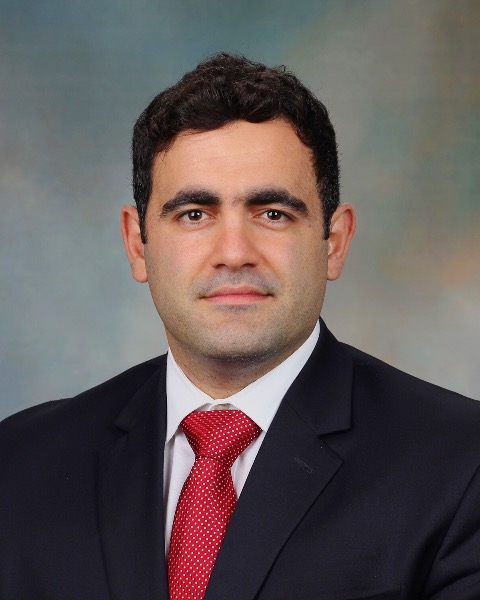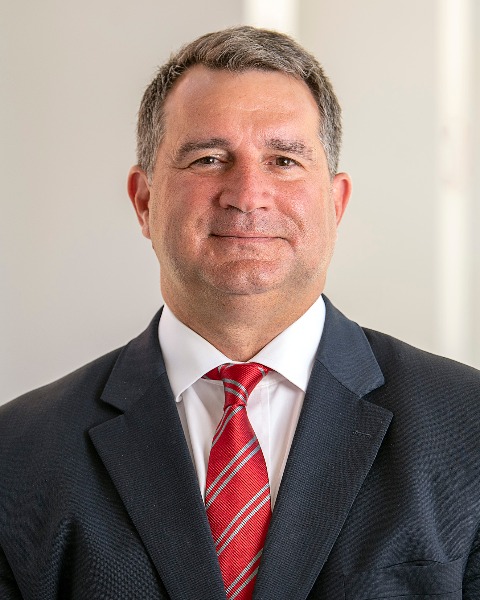Colorectal/GI
non-CME
P13: Multiomic Profile of Colorectal Cancer Cell Line Radiosensitivity

Rami James N. Aoun, MD, MPH
Resident
Department of Surgery, The Ohio State Wexner Medical Center
Columbus, Ohio, United StatesDisclosure information not submitted.
- SF
Sylvain Ferrandon, PhD
Postdoctoral Scientist
Division of Colon and Rectal Surgery, Department of Surgery, The Ohio State Wexner Medical Center, United StatesDisclosure information not submitted.
- JF
Joseph Fedro, n/a
Student Research Assistant
Division of Colon and Rectal Surgery, Department of Surgery, The Ohio State Wexner Medical Center, United StatesDisclosure information not submitted.
- MH
May Zin Hlaing, BA
Research Assistant
Division of Colon and Rectal Surgery, Department of Surgery, The Ohio State Wexner Medical Center, United StatesDisclosure information not submitted.

Matthew Kalady, MD (he/him/his)
Professor of Surgery, Chief, Division of Colon and Rectal Surgery
The Ohio State University and James Comprehensive Cancer CenterDisclosure(s): Activ: Advisor (Ongoing), Consultant (Ongoing), Speaker (Ongoing)
Poster Presenter(s)
Author(s)
Neoadjuvant therapy is standard of care for patients with locally advanced rectal cancer and response to treatment directly correlates with outcomes. Identifying key biological processes underlying a good response could lead to more individualized care. Many studies trying to find predictive signatures are limited by small numbers of patients, cell lines, or one type of marker. We hypothesized that we could develop a robust predictive signature using a large number of colorectal cancer (CRC) cell lines with both transcriptomic and proteomic data.
Methods:
Thirty-two commercially available CRC cell lines were classified according to Radiobiological Survival Fraction at 2Gy (SF2) indices as radiosensitive (SF2 < 0.5) or radioresistant (SF2 > 0.5). RNA seq transcriptomic and mass spectrometry derived proteomic profiles were obtained for each cell line. Differentially expressed genes (DEGs) and proteins (DEPs) between sensitive and resistant lines were identified and analyzed. Gene ontology pathways were obtained for the resulting profiles.
Results:
Sixteen of the CRC lines were stratified as radiosensitive and 16 were radioresistant based on SF2. Differential gene expression between groups yielded 79 genes, given a < 0.05 q-value. Top differentially expressed genes include NANOGP1 and JPH2 with a >5 log2-fold change between the groups. Gene ontology biological processes enriched for carbohydrate import across cell membrane. Differential protein expression comparing both groups yielded 351 DEPs, given a < 0.05 p-value. Gene ontology biological processes enriched for clathrin-dependant endocytosis and regulation of protein localization to cell surface, among other pathways. Gene ontology molecular function enrichment includes clathrin adaptor activity and gamma catenin binding.
Conclusions:
Using a multiomic approach, we identified key pathways and processes associated with CRC cell line radiosensitivity. These findings provide the foundation for further investigation to determine true biological and clinical significance.
Learning Objectives:
- Identify a gene signature associated with colorectal cancer cell line radiation resistance
- Identify differentially expressed proteins and pathways comparing radiosensitive and radioresistant colorectal cell lines
- Define radiobiological indices of cancer cell lines
